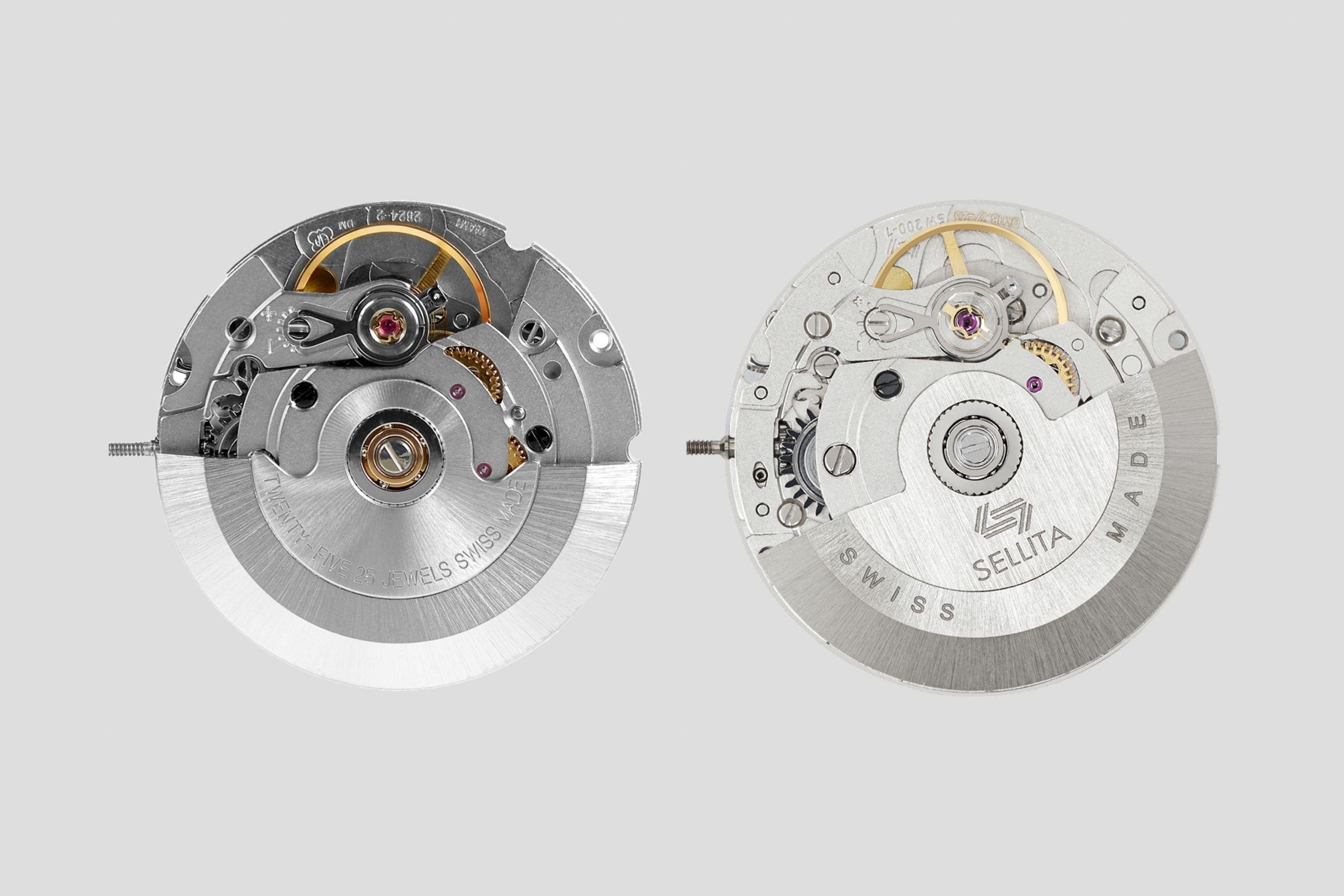This isn’t the first article to be written on the topic and it certainly won’t be the last but with the release of the Tudor Royal featuring the caliber T601 based on a Sellita movement, I thought it was a good time to provide a watchmaker’s perspective on these two watch movements.
First, let’s acknowledge that Tudor will not be dropping a Sellita movement straight out of the package in their new models. Like they have always done with ETA movements, Tudor will surely be using their own escapement, regulation system, and oscillator with custom finishing. Tudor uses what the industry has always called an ebauche and then makes modifications in-house. This certainly adds some value to the watch because of the Rolex know-how that goes into the most critical components in these watches.
Next, let’s look at the history of these two brands.
The ETA we know today is the result of the consolidation and vertical acquisitions of the Swiss watch industry. The company’s roots began with the Eterna watch company which was founded in 1856. In 1896 Eterna established a division focused solely on watch movements. By 1926 the mergers and consolidations had already begun when ETA AS (the movement division of Eterna) and FHF (Fabrique d’Horlogerie de Fontainemelon) created Ebauces Ltd. A series of acquisitions and mergers that took place throughout the 20th century resulted in the creation of SMH and later the Swatch Group which today includes the intellectual property of dozens of watch movement manufactures including most notably, ETA, ESA, Valjoux, Lemania, and of course, Omega. Ironically Eterna is currently owned by the Chinese conglomerate Citychamp Watch & Jewellery Group and has developed a completely separate set of watch movements with no connection to the workhorses that appeared in their watches throughout the middle of the 20th century.

Sellita’s history isn’t as extensive as that of ETA, but it is substantial nevertheless. Sellita has been assembling movements and watches for the Swiss industry for 70 years and they were an important partner of ETA for many years. They began designing and manufacturing movement components many years before ETA made the decision to limit the sale and production of movements which made them perfectly poised to support the needs of the industry as ETA withdrew from the market.
Since the 2004 release of the SW-200 Sellita has focused on delivering calibers that will interchange directly with ETA calibers. This doesn’t mean they are the same, it simply means they will fit in the same case and accommodate the same dials and hands. This made it easy for brands like Tag Heuer, Oris, and others to switch to using Sellita movements because they didn’t have to redesign any of their watches. If you put a Sellita watch movement alongside the corresponding ETA movement the untrained eye won’t be able to tell the difference. Visually they are nearly indistinguishable. The layout is the same. The finish is similar. This shouldn’t be surprising considering Sellita has been doing work for ETA for years. There are some slight, but important differences. The biggest difference is ETA has a proprietary tooth profile which they use in their calibers. Sellita uses a different but technically similar profile. Figure 1 shows the Sellita gear on the left and ETA gear on the right. Ignore the differences in finishing. The ETA wheel is from an elaborate quality movement and the Sellita is their normal grade. Look closely at the shape of the teeth. You will notice that the ETA teeth are narrower and more triangular when compared to the teeth of the Sellita wheel. They are close enough that you might be able to get away with interchanging them, but the mismatched parts would wear out prematurely. There are other subtle differences as well. For example, the SW200-1 has 26 jewels while the ETA 2824-2 has just 25 jewels. The extra jewel is for the barrel arbor under the ratchet wheel. The ETA movement has a steel bearing. There isn’t any real advantage to using a jewel in place of a steel bearing here and it certainly won’t change the timekeeping or the durability of the watch. I think this jewel’s main purpose may be to help distinguish the Sellita caliber from the ETA caliber. The Sellita calibers are the closest to the ETA calibers of all the companies making “ETA Clones” which includes STP, SwissTech, and of course Seagull.
It is widely known that when Sellita released their first caliber in 2004 it had some issues, but that is true of any new caliber. Most notably, several of the winding components failed prematurely on the first version of the SW200. It was very common to see ratchet wheels with worn out and even broken teeth. Those issues have been resolved with the release of the SW200-1. The Sellita technical document shows the changes that were made to the reduction wheel, driving wheel, and ratchet wheel.

What we are seeing from Sellita today is 99% as good as what comes from ETA. Just like ETA, Sellita provides different qualities of finishes including some different plating options and skeletonization options uniquely different from what ETA provides. The different complications and configurations are expanding all the time and any brand can get their hands on movements that would never have been attainable from ETA. The SW500 (ETA 7750) comes in manual and automatic versions with just about every possible subdial configuration and with 1, 2, or 3 pusher configurations.
As a watchmaker, I have worked with both ETA and Sellita movements straight from the factory and in after-sales service. From the factory, they perform as total equals with average daily rates and positional variations which would easily qualify them for COSC certification. Adjustments are made exactly the same and equally as easy. The finish on the components is nearly identical. They are made from similar quality materials and usually exhibit similar amounts of wear after normal use and since we don’t see any reason why Sellita won’t continue to be successful as a company you can expect to find spare parts for many years to come.
You may still find some watchmakers and collectors out there who turn up their noses at the thought of Sellita based on their early mistakes and their fear of the unknown. Sellita movements have become a mainstay in the industry and as they are exposed to more of them, they will come around.
When faced with a decision between a watch with an ETA movement or a Sellita movement: Buy with confidence! Make your decision based upon the design, the level of finish, and the price. When it comes to wearing the watch on your wrist, you won’t know the difference.


